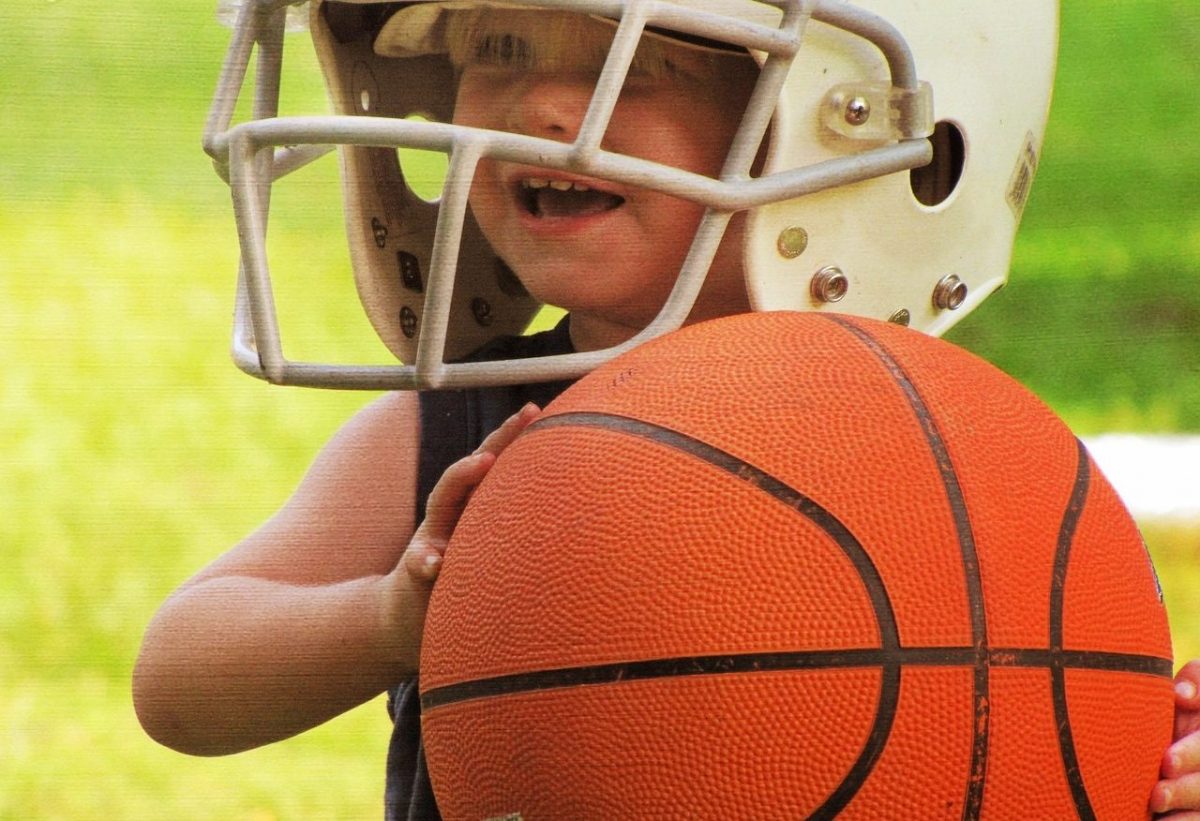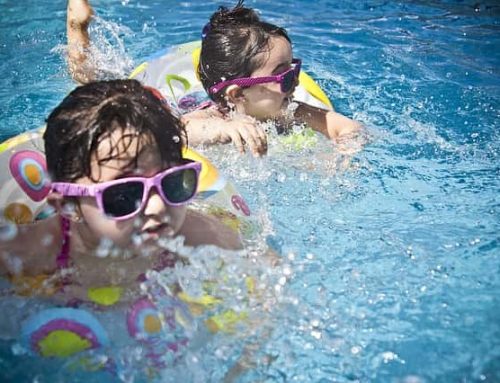by Narissa Ventress, M.A., CCC-SLP
Over 30 million youth participate in organized sports involving some form of physical contact each year. With sports, it’s no secret that injuries are bound to happen, and some may even consider it “part of the game”. While the general tradeoffs may seem obvious, not every injury is created equal. There is a particular injury that poses a serious threat to —let’s says—the brain. Traumatic Brain Injury (TBI) is the technical term. Each year, U.S. emergency rooms treat more than 100,000 sports-related concussions in kids age 19 and under, according to the CDC. As TBIs become more of a public health concern, it’s important to understand the ramifications of a TBI, having consequences in cognition, behavior, language, and overall child development (to name a few). More specifically, by understanding the potential consequences, you become better equipped in evaluating your child’s exposure to head injuries.
Physical and Behavioral Consequences of a Traumatic Brain Injury
Following a traumatic brain injury (TBI), headache is the most common immediate symptom. This is usually resolved with pain killers. However, in children, a TBI is also more likely to trigger or exacerbate migraines. More serious symptoms include seizures, dizziness, loss of consciousness, reduced muscle strength, nausea and vomiting, and coordination and balance impairments.
The particular symptom will depend on the location and severity of the trauma. For example, if an athlete falls backward on her head suffering significant damage to the parietal lobe (one of the four lobes making up the cerebellum), she may experience difficulty with sensory input, reading, and even comprehensive awareness of her own body and spatial positioning. That area of the brain must then compensate for the neuron loss, as damaged brain cells may not regenerate. However, new connections may generate between the neurons of the intact areas of the brain (neuroplasticity). Through this reorganization, the new connections take over the duties of the injured brain cells. Although convenient, the damage can be too severe to prevent the reduction of a child’s overall cognitive capacity.
From a behavioral view, the aftermath of a TBI may result in various behavioral patterns that are specific to each person. Some have no problems returning to a social environment while many will struggle with their return to school, exhibiting changes in behavior such as mood swings, irritability, changes in expressing emotions and impulsivity. Post-traumatic syndrome may follow a moderate TBI, which may result in more subtle effects like an inability to concentrate, irritability, and nervousness.
In children, these behavioral problems can manifest themselves as insulting or running from people they don’t like, grabbing and taking things without permission. In adolescents, inappropriate sexual behavior, temper outbursts and substance abuse can also be observed.
Communication Challenges
Children that have suffered a TBI may experience communication problems due not only to cognitive deficits but also because of injuries that occur in the various language centers of the brain. Significant damage to Broca’s Area (located in the left hemisphere), for example, may present problems in speech production and articulation. Even if language skills are not apparent post-injury, broader communication skills can still be impaired. Communication involves cognitive resources like language which combines memory, attention, problem-solving and organizational skills in order to communicate adequately. Any deficit to a communication resource will result in a deficit in overall communication.
A deficiency in cognitive resources may result in a child’s inability to accurately communicate in moments of stress. This can be observed as a decrease in language performance during school hours, tests, assignments and in social interactions. The children suffering from these problems may appear to be hard of hearing, asking for a question to be repeated, and/or answering too slowly or beside the point.
Strategic learning is another essential function that is often poorly developed in children that have sustained traumatic brain injuries. Strategic learning is defined as the brain’s ability to extract essential information while discarding unimportant features. It is essentially the ability to summarize important information and store it adequately. Children with impaired strategic learning skills may retain only or too much unessential information or may not be able to recall the important point of a new task or lesson. Even after several years post injury, children suffered measurable difficulties. See one of the comments of this study:
We asked 38 children with TBI to summarize an expository text, we found that children aged 8 to 14 years, who had sustained either a mild or severe TBI (at least 2 years post injury), exhibited difficulty in abstracting “gist” compared with typically developing children (Chapman et al., 2006)
Language Disorders
Severe trauma to the brain can lead to neuron injury resulting in both focal and global brain lesions. It’s basically an abnormality seen on a brain scan/image. These lesions can occur in the language centers of the brain leading to various language disorders. Acquired language disorders can manifest through deficits in syntax, pragmatics, vocabulary or semantics and even deficits of higher-order language such as understanding of irony and sarcasm.
Specific communication deficits in children and teenagers following a traumatic brain injury could be:
- Aphasia: difficulty producing and understanding speech correctly
- Dysarthria: is a motor-speech disorder characterized by a slurred speech
- Apraxia: difficulty programming the muscles responsible for speech
Cognitive Deficits
Traumatic brain injuries most often occur in the frontal lobes and temporal lobes. The frontal lobe is responsible for initiation and attention among many other responsibilities. The temporal lobe has a lot to do with memory as well as emotional control. Because of this, children and young adults with both mild and severe brain injuries are at risk of suffering from cognitive deficits.
These are usually translated as changes to reasoning, memory, planning and initiating tasks, difficulty with solving problems and difficulty learning new information. After a TBI, children have even been observed to exhibit difficulties navigating around their neighborhood and school which is usually caused by more general difficulties with attention. Others have been observed as fidgety and easily distracted, which ends up hindering their ability to learn new information, both in the classroom and at home. When it comes to memory – older memory, prior to the head injury is relatively unaffected. However, they can show difficulties with the acquisition, consolidation, and recall of new information.
Parents, teachers, and school medical staff must always be conscious of the symptoms and signs of traumatic brain injuries. Young adults and teens often avoid reporting injuries and symptoms in order to portray toughness or avoid social stigma, because of their dedication to the team or because they assume it’s a normal passing state. Younger children may express symptoms through simpler or unconventional vocabulary, sometimes not easily understood, it’s important to look for any unusual changes in exhibited behavior.
Although many children and adults alike recover from mild to moderate traumatic brain injury with little to no repercussions, multiple traumatic events can still lead to behavioral, communicative and cognitive issues. So, be aware of what activities your kids engage in. Some injuries may just be “part of the game”, but when it comes to TBIs, the cost to play may just be a little too high.
If you have any concerns about a Traumatic Brain Injury, please contact your physician. If you have any concerns with your child’s language development, contact your local speech-language pathologist.
Avid Speech Therapy is located in Fountain Valley, in Orange County, California. We offer professional, evidence-based services, and we strive to enrich the experience of each client-therapist relationship.
References
Babikian, T&Asarnow (2009). Neurocognitive outcomes and recovery after pediatric TBI: Meta-analysis of the literature. Neuropsychology, 23(3), 283-296.
Baugh CM, Stamm JM, Riley DO, Gavett BE, Shenton ME, Lin A, et al. Chronic traumatic encephalopathy: neurodegeneration following repetitive concussive and subconcussive brain trauma. Brain Imaging Behav. 2012;6:244–254.
Catroppa, C., Godfrey, C., Rosenfeld, J., Hearps, S. and Anderson, V. (2012). Functional recovery 10 years following pediatric traumatic brain injury: outcomes and predictors. J Neurotrauma29, 2539-2547.
McKinlay, A., Dalrymple-Alford, J., Horwood, L. and Fergusson, D. (2002). Long-term psychosocial outcomes after mild traumatic brain injury in early childhood. J Neurol Neurosurg Psychiatry73, 281-288.
Gamino, J.F., Chapman, S.B.&Cook, L.G.(2009). Strategic learning in youth with traumatic brain injury:Evidence for stall in higher-order cognition. Topics in Language Disorders, 24(3), 1-12.






